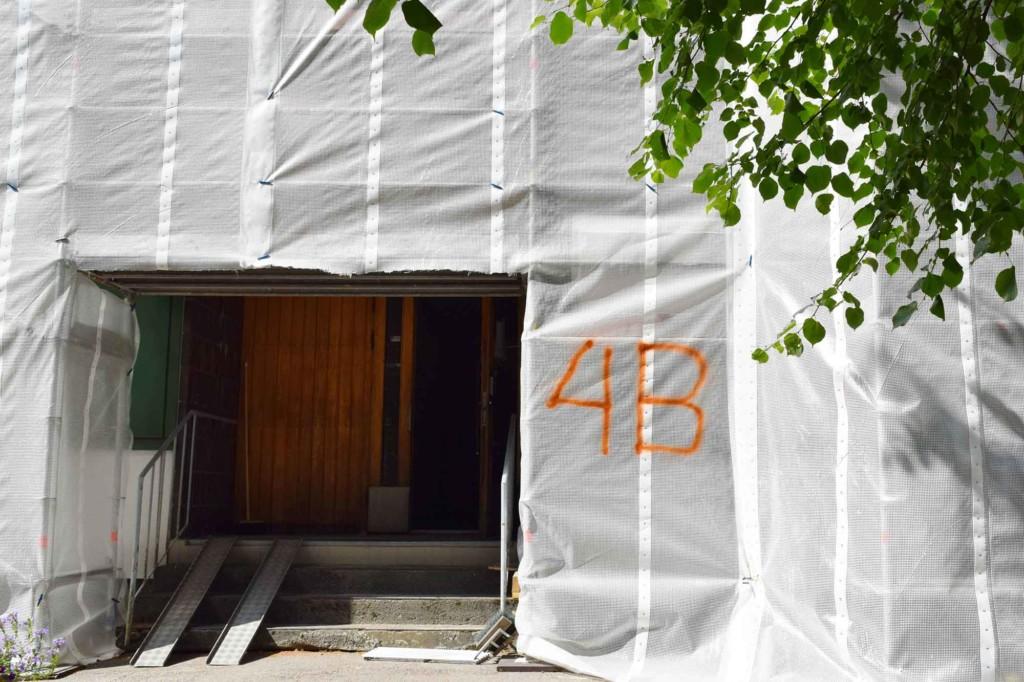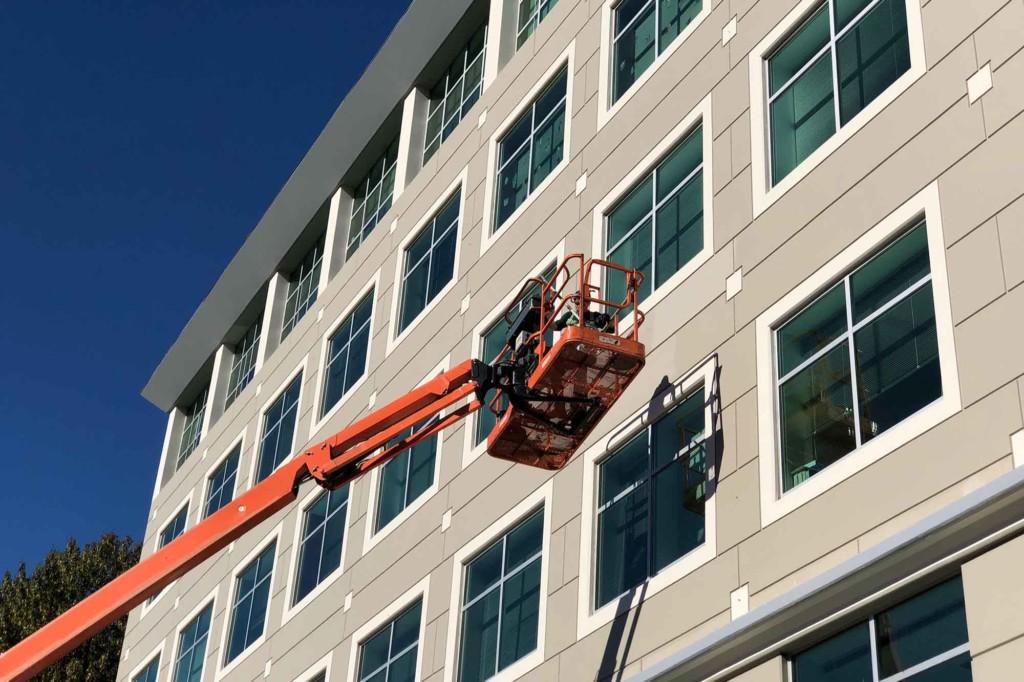Climate change has a major impact on exterior faces
It seems that the weather conditions are changing, at least in most of Finland, to a more humid direction, which also increases the stress on building structures. As rain falling diagonally becomes more common, structures become wet more often, which also increases the risk of structural damage. In continuously humid conditions, there is less time for the structures to dry and there is a risk that damage will start to occur even in structures that have previously been fine.
Tall buildings are more susceptible to weather stress
The problems with exterior face structures are particularly acute in areas with the most weather stress, such as near the coastline and in the case of tall buildings. Different types of materials and structures used in exterior faces behave very differently in terms of humidity. Increased humidity stress can cause problems, especially in structures that have previously been based on the premise that the structures have enough time to dry before the next wet period. Such structures include solid brick facades and exterior faces coated with a water-resistant coating, which absorb moisture.
In general, materials that are highly resistant to moisture should be used close to the outer surface of a building’s exterior walls. In addition, fault tolerance should be taken into account when choosing materials and structure types, as it varies significantly between materials and structures. For example, successful spreading of a thin layer of plaster depends heavily on the fitter’s skill level and the installation must be very accurate, while installing building boards is much simpler. Ventilated structures should be preferred, especially at sites with high weather stress, as they are much more fault-tolerant.
In general, efforts should be made to minimise the amount of water penetrating behind the exterior face and there should be a controlled water drain system in the ventilation gap (if any) to guide any leaking water out of the structure.
Significant shortcomings in the implementation of joints between structural elements
In many cases, problems are encountered if the exterior face structure includes many different structure types, because this increases the number of risky joints. Unfortunately, according to my observations on new buildings, there are major shortcomings in the implementation of structural joints in general, which can cause problems in the long term. People fail to pay enough attention to the implementation method of joints and, unfortunately, lack of supervision is also often apparent in this respect. The problem is also partly due to attitudes: the significance of careful implementation is not recognized or it is ignored.
Diagonally falling rain can surprisingly quickly penetrate exterior face masonry
Poorly ventilated masonry in the exterior face of a building is also a problem: in this case, the risk is humidity damage in the thermal insulation materials. Diagonally falling rain can surprisingly quickly penetrate the masonry, in which case a large amount of water will flow through the ventilating slot. In the past, sufficient attention was not paid to the need to add a proper ventilating slot. In many cases, there is no ventilating slot at all or it has been plugged up with mortar, which means that the insulation materials will get wet. This can lead to humidity damage in the building and health hazards for the users of the property.
Regulations on protective air entrainment to improve the weather resistance of concrete exterior faces were prescribed already in the early 1980s, and at best, the weather resistance of concrete structures is excellent. However, air entrainment has failed in many cases, resulting in a regrettable lack of weather resistance of the concrete structures and a short service life of the structures. On the other hand, I have seen buildings from the 1960s that, despite the absence of protective air entrainment, have very well-preserved structures, which can be due to the sealing capacity of the concrete, for example. Partly due to the alkalinity of concrete, the conditions in the insulating space of concrete elements are not favourable for microbial growth, which is why relatively little damage caused by moisture has been observed in the insulating spaces of concrete exterior faces.
There is a great deal of variation, and you cannot draw any conclusions on the basis of the age of the building. Structures and structures types from different eras have their own problems, of which an experienced inspector is aware based on the type of structure.
Condition surveys carried out from a personnel hoist provide more detailed information
In general, it makes sense for property owners to take care of the condition of their property. In many cases, it is not possible to reliably determine the condition of structures without more detailed surveys. Condition surveys and inspections of structures are excellent tools for determining the condition of structures and planning the maintenance of properties. In addition to a visual inspection from a personnel hoist, structures are often opened, and samples and measurements are taken using a variety of tools during a condition survey.
The survey report presents recommendations with cost estimates and the timeframe for any repairs. Even if there is no clear need for any structural repairs in the next few years, you will receive valuable information on the condition of the structures to assess future viability of the structures. A condition survey also serves as the initial data for actual repair planning.
In the case of major repairs of the exterior face of a building, it is important to bear in mind the whole, because structures are often interconnected. For example, when you replace windows, it is often sensible to study the condition of the exterior faces as well, even if you cannot see any indication of the need for any major repairs yet.
Don’t forget to invest in inspections and the monitoring of new buildings!
In the case of a new building, you should absolutely invest in warranty inspections and the monitoring of repair work, even though it may seem that a new building cannot have any defects. This will save you money in the long term. Repairs that have cost hundreds of thousands of euros, which the developer has been obligated to pay, have been performed on the basis of inspections in some of the new buildings I have inspected. Many people fail to perform inspections on time, which means that their right to have any faults and defects repaired at the expense of the developer expires and the shareholders will be forced to pay for the problems.
After the warranty period, the proper inspection interval for exterior face structures is every five years if there are elastic seams between the exterior face elements. It is often wise to look at the other structures at the same time, while you have a personnel hoist in place. Let’s take care of the condition of your property together!



